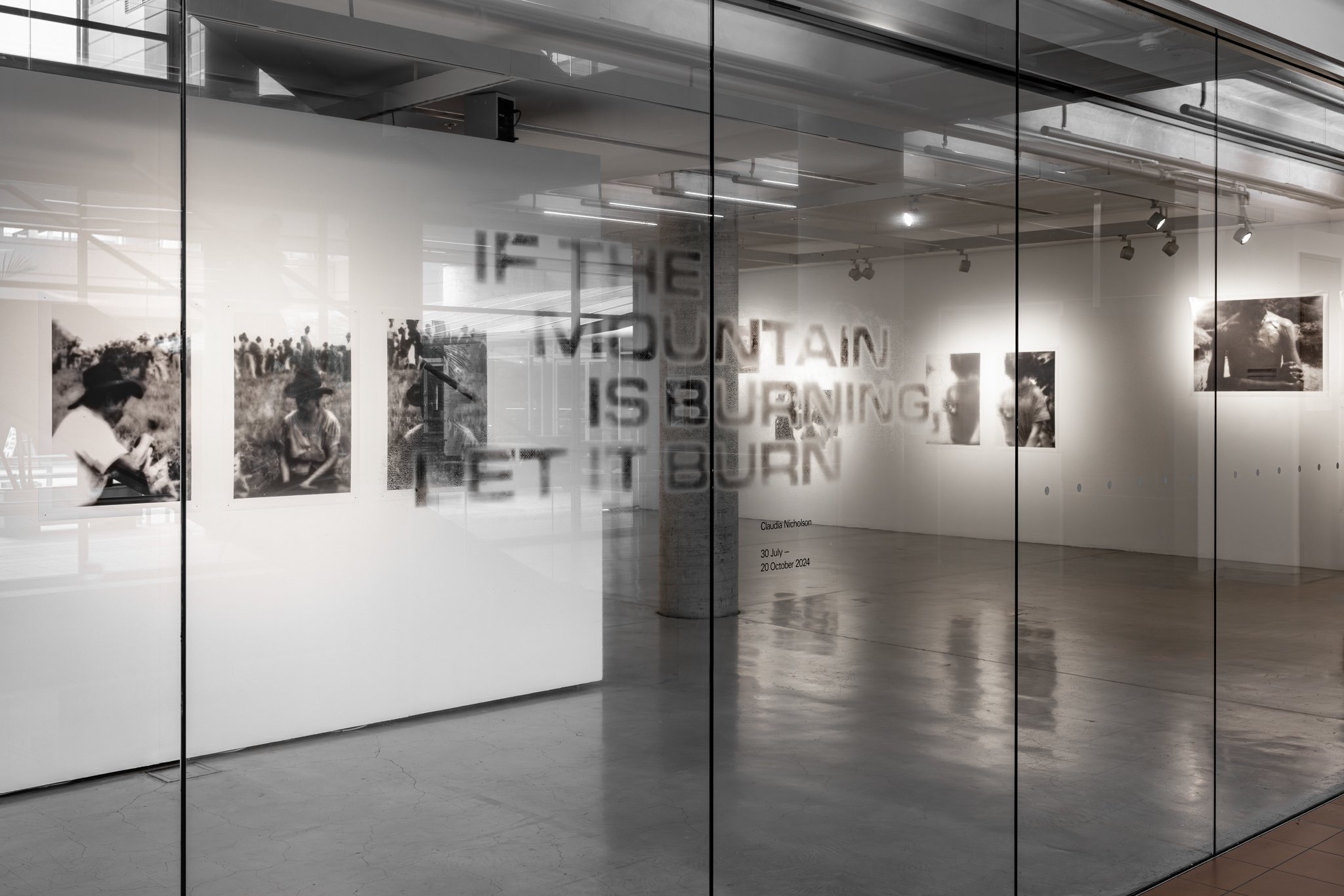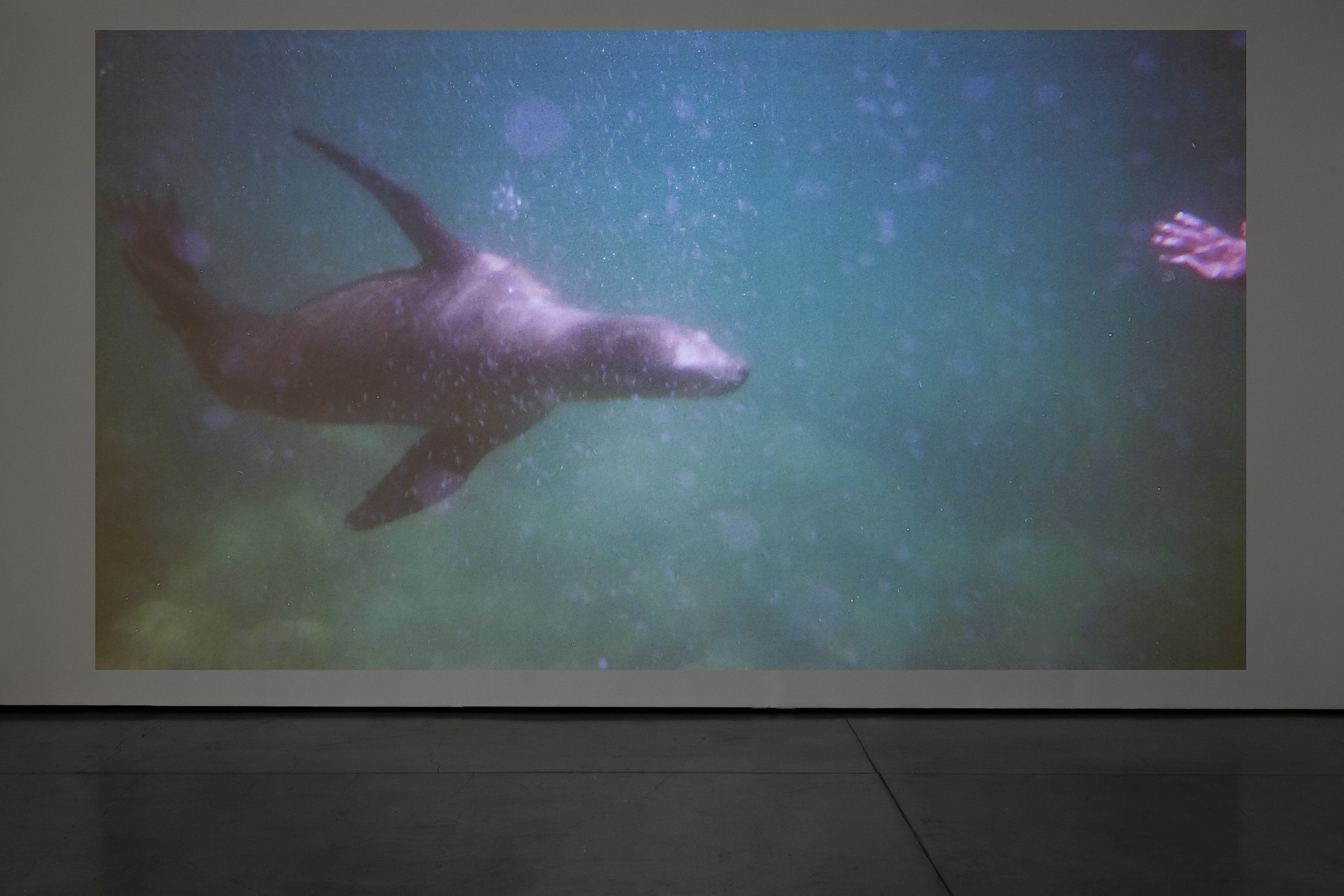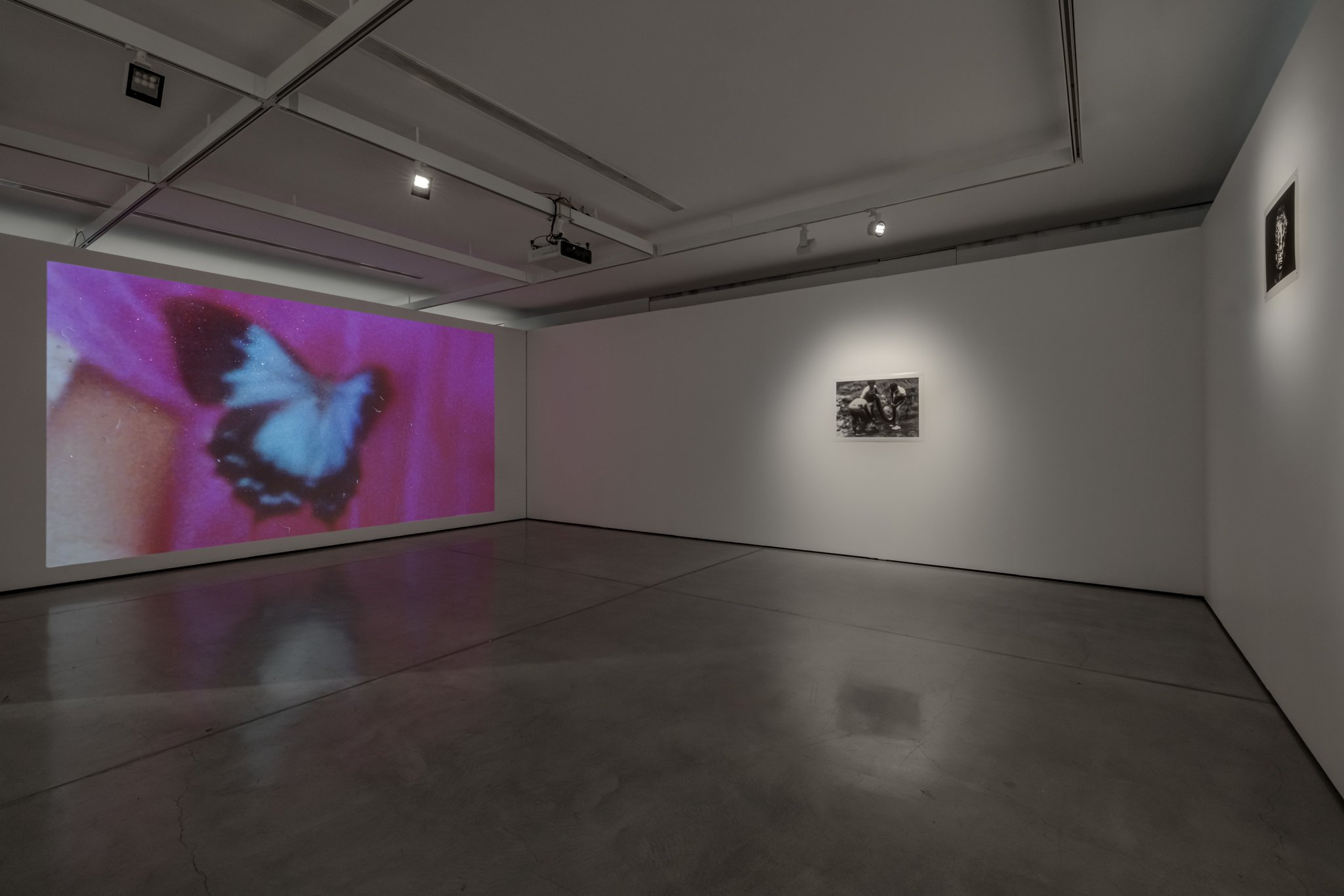Claudia Nicholson: ‘If The Mountain Is Burning, Let It Burn’ at UTS Gallery
/Rearranging, recollecting and recovering: these are the actions that define Claudia Nicholson as she reaches back into her archive. ‘If The Mountain Is Burning, Let It Burn' is a sombre, blurry and glittering exhibition, and the latest output of the University of Technology Sydney’s (UTS) Artist in Residence program. Positioned within the Ultimo campus, UTS Gallery is dimly lit, as if you were searching for photographic clarity through a smouldering haze. Nicholson’s spotlit photographs remind me of how museums tend to illuminate disparate artefacts to increase their dramatic effect. The subject matter and the memories evoked are vast, heavy and sentimental.
In developing the exhibition, Nicholson excavated her personal archive to glean and reorganise a portrait of Colombia, with images taken from family photographs, negatives discovered at flea markets, as well as her own photographs and videos. The artist is one of thousands of children adopted from Colombia to Australia since the 1970s, a subject Nicholson has explored at different points throughout her practice.
Many of the histories conveyed in the exhibition are small and personal, like the images of Nicholson and her sister. Butterfly Sanctuary (2024) presents a sweetly inquisitive little girl, her gaze fixed on a butterfly as it hovers towards her heart; imagery that could feature in the music video for a pop song contemplating the evanescence of girlhood. Equally wistful is The Deep Rivers Say it Slowly (2023), the video installation at the heart of the exhibition. The lulling and slightly unnerving music by Monica Brooks accompanies images of protest, violence and more butterflies. The video is projected upon a surface covered in a delicate and fine glitter, cohering the story of war and amnesty, girls and butterflies in nostalgia. Images fade into one another, as if doubly exposed, to evoke memories interposed with the dreams of an observer.
Many of the photographs in the exhibition have been captured by Nicholson, several by her father, and others collected on a 2008 trip to Bogota. The narrative connecting these images asks: what if memory was outsourced? If we stole historical memories as personal ones? If we inserted personal memories into archives? Who does the memory belong to?
Nicholson describes the project as coming “after a pause in making.” The residency program has provided Nicholson with a recess to arrange her personal archive, and working with Cherine Fahd and Dr Marivic Wyndham has encouraged the artist to reconsider her past portraits of Colombia by applying a newly developed visual language. Nicholson’s vibrant Alfombra de aserrín (sawdust carpets) that have previously been made into installations and performance works stand in stark contrast to what we see here. Usually, their form has allowed them to be destroyed in some kind of performance spectacle. If they were neon, they pulsated with gradients and gothic fonts associated with the played out ‘Tumblr aesthetics’ of the mid 2010s. Nicholson’s exhibition at UTS Gallery is much more opaque.
‘If The Mountain Is Burning, Let It Burn' offers further evidence of the important role played by artist research initiatives such as the UTS Artist in Residence program. These opportunities provide artists with the resources to experiment and conduct research into innovative modes of making and, in this case, has allowed Nicholson the access to facilities and expertise to explore new outcomes in her practice. The negatives from old family albums and found photographs are transformed by Nicholson’s processes and treatments. The photographs begin to escape the precision of the institution, and sometimes even eschew the camera entirely. They suggest hidden iterations, progressions that were once crystalline to atrophying copies and prints. The technology of image making reshapes what was captured into a narrative, creating a new texture for the artist’s history and her relationship to Colombia. And the texture is sometimes a glittered projection surface.
Laura Luciana, Warrang/Sydney
‘If The Mountain Is Burning, Let It Burn’ is on display at UTS Gallery until 20 October 2024.






















